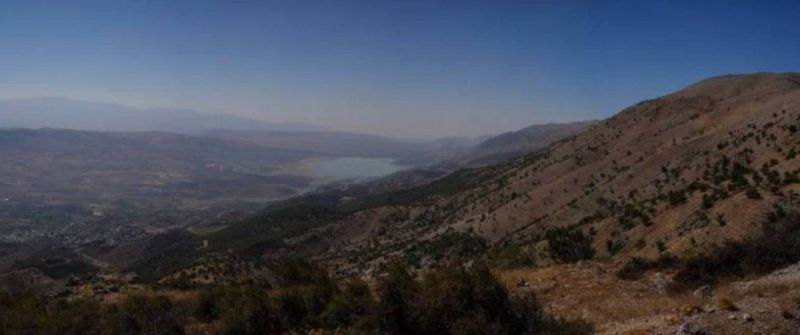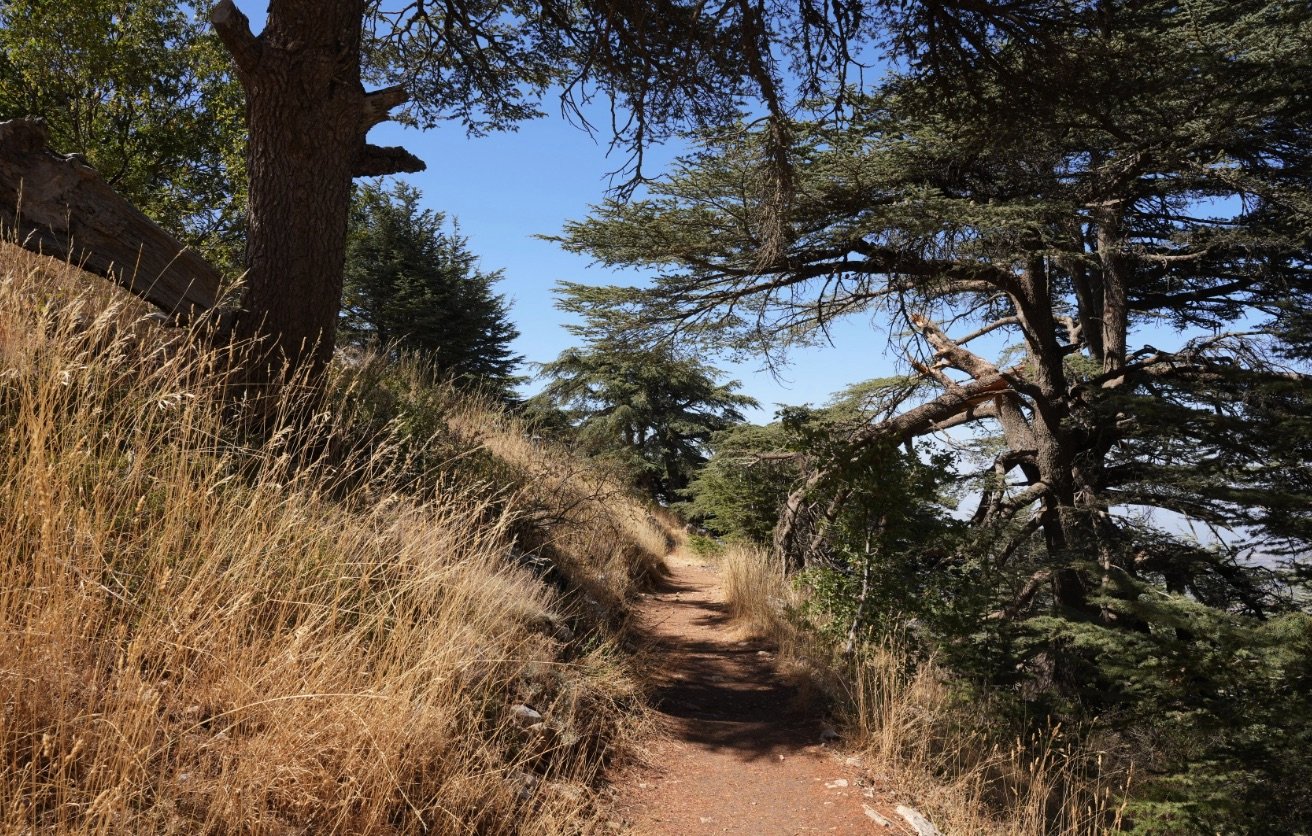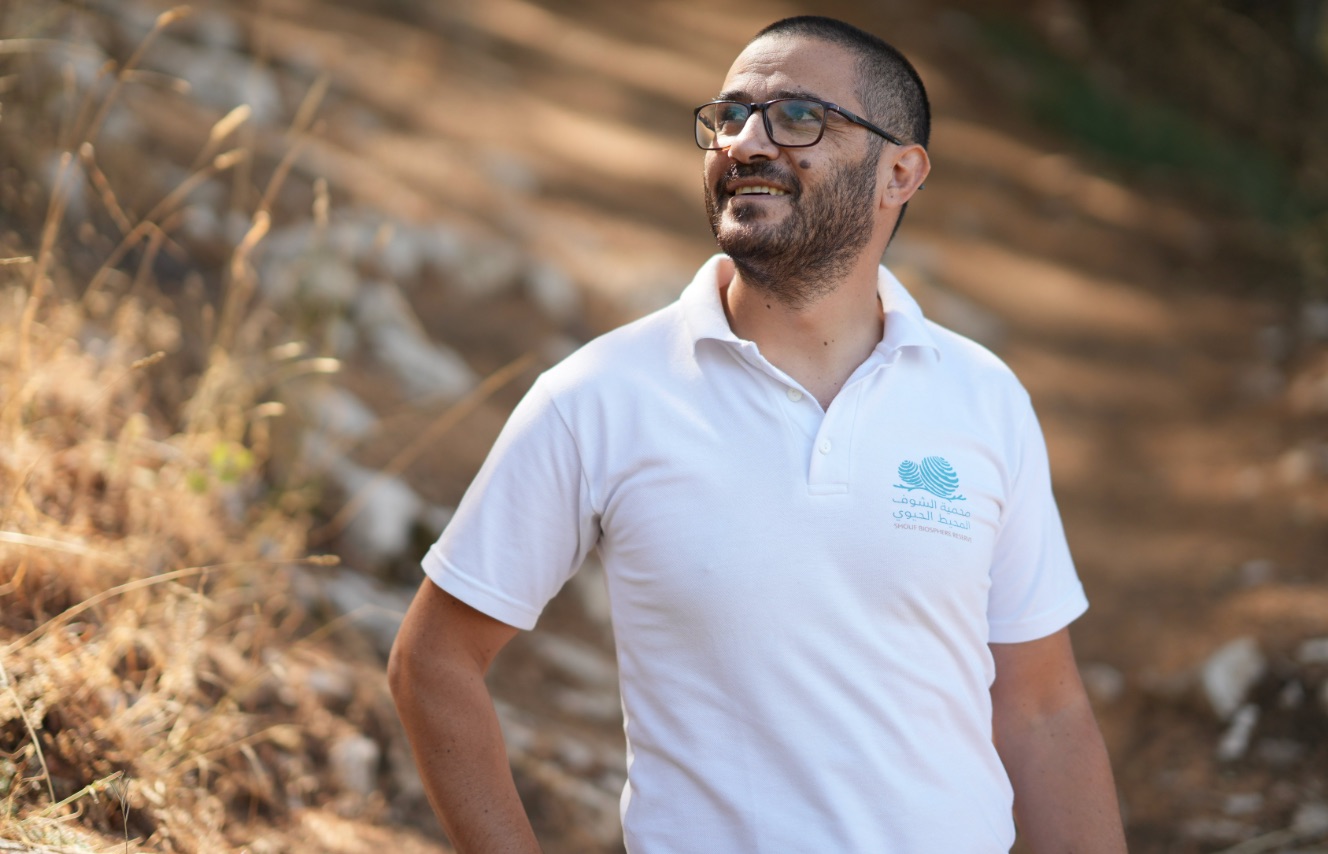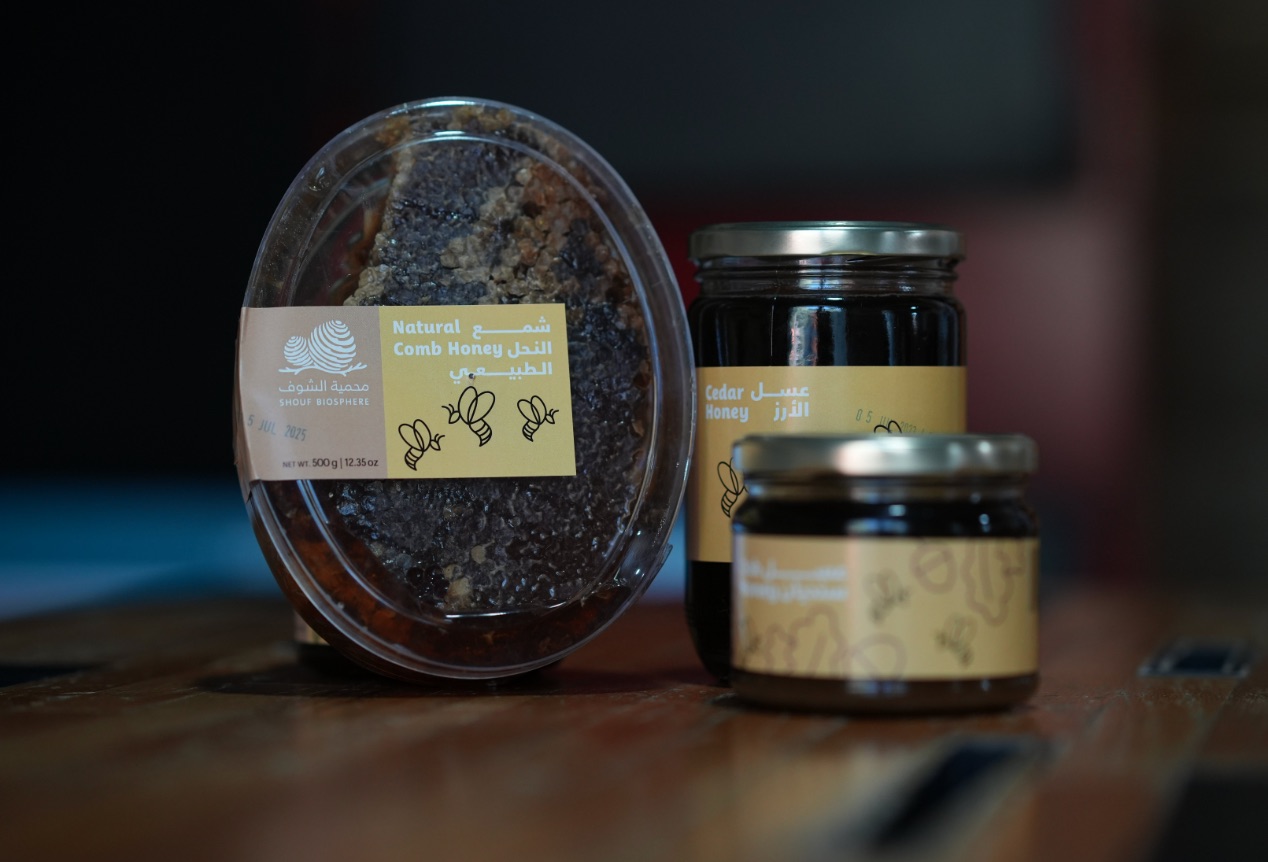
View from the eastern slope of the Chouf reserve. (Credit: Mohammad Yassine/L'Orient Today)
Over the Anti-Lebanon mountains, from the eastern slopes of the Chouf Cedar Nature Reserve, the breathtaking view is dotted with picturesque villages and protected sites. To the south, Lake Qaraoun peeks out and Mount Hermon, which is home to a new nature reserve, rises majestically.
Bioconnect, a project financed by the European Union, was launched to strengthen the ecological and territorial connection between protected sites. The project covers the south of the country from Sour, all the way to Matn, and includes the Chouf and Western Bekaa valley.
Standing in the shade of century old cedars at the Maaser al-Chouf forest, Kamal Abou Assi, a member of Al-Shouf Cedar Society and Bioconnect coordinator, said the project’s priority is to strengthen the management of existing reserves through the transfer of experience, and the establishment of a management system in new reserves.
“Its second key component aims to determine new areas to be protected between these different sites in order to extend the land area where biodiversity is no longer under pressure and to create safe corridors for species,” Abou Assi explained.
 One of the trails in the magnificent cedar grove of Maasser el-Chouf, one of three in the reserve. (Credit: Mohammad Yassine/L'Orient Today)
One of the trails in the magnificent cedar grove of Maasser el-Chouf, one of three in the reserve. (Credit: Mohammad Yassine/L'Orient Today)
Biodiversity protection has become more crucial with Lebanon’s economic crisis. “Lebanon’s biodiversity is under serious threat of degradation,” said Alessia Squarcella, deputy head of cooperation at the EU delegation to Lebanon.
“The harmful effects of climate change are exacerbated by a number of behaviors resulting from the financial crisis, such as increased and unregulated use of water, soil erosion and deforestation. Our project in the Chouf aims to preserve biodiversity and ecosystems by empowering local communities to effectively manage protected areas,” she added.
Recent cases of mass illegal felling of century-old trees across the country have raised concern. Squarcella noted that Lebanon’s protected area fall short of international standards and only cover 2.18 percent of Lebanese territory. Existing protected areas lack resources, management and support from the struggling state.
The project, which began in December 2021 and will run until November 2025 with a budget of €4.5 million, aims to provide concrete solutions to these challenges.
Creating ‘safe corridors' for species
Amongst the reserves included in the project are the Chouf Cedar Reserve, the new Mount Hermon Reserve and Sour’s beach. A geological park under construction in Jezzine and the hima (areas protected by local authorities) in Ras al-Metn, Hammana, Ain Zebdeh, Khirbet Qanafar, Ibl al-Saqi, Mansouri and Qleileh will be added.
The new areas that will receive protection will be located between these sites, said Abou Assi. He explained they will be chosen based on the plant and animal species they contain. “Biodiversity knows no borders,” Abou Assi said. “Migratory birds, for example, are protected in the reserves, but not beyond them. Hence, it is important to create these protective corridors.”
Abou Assi addressed the difficulties that could arise from trying to protect areas that falls on private property or declared military zones. He said that even if some parts of land are not officially classified as reserves, the priority is to introduce the protection component for the land’s use. Example of this could include protecting particular flower species from urban expansion, or strictly prohibiting the hunting of particular bird species whose routes have been identified. If necessary, decrees could be adopted in collaboration with the ministries concerned, he said.
Sustainable agriculture to combat climate change
Working alongside the Al-Shouf Cedar Society, which is leading the project, is the Society for the Protection of Nature in Lebanon (SPNL), which has reintroduced the traditional concept of "hima” in Lebanon. The Association for the Development of Rural capacities, which is linked to the reserve in Sour, and the Association for community and Environment (ACE), which works in Jezzine, are also involved in the project.
The project aims to integrate NGO’s, local authorities, and vulnerable social groups like refugees, the unemployed, women, children and the disabled into the project, said Squarcella.
 Bioconnect coordinator Kamal Abou Assi talks about the benefits of biodiversity protection corridors and cooperation between reserve management teams. (Credit: Mohammad Yassine/L'Orient Today)
Bioconnect coordinator Kamal Abou Assi talks about the benefits of biodiversity protection corridors and cooperation between reserve management teams. (Credit: Mohammad Yassine/L'Orient Today)
Local participation in activities related to land rehabilitation and sustainable agriculture could improve livelihoods and increase resiliency in the face of the economic crisis, she added.
Bioconnect also addressed agriculture within the vicinity of forests. On the outskirts of the Chouf reserve, Abou Assi showed us recently cleared farmland and rehabilitated earthworks, which would help reduce the risk of fires triggered by accumulated biomass.
Squarcella explained that the project also involves the rehabilitation and sustainable management of 30 hectares of abandoned or over-exploited agricultural land across the Chouf and an additional 20 hectares in Mount Hermon.
 oney, one of the products labeled Chouf reserve and manufactured by residents around the reserve. According to a study carried out by the Chouf Cedar Association, each dollar invested in protection generates 19 dollars in benefits for local populations. (Credit: Mohammad Yassine/L'Orient Today
oney, one of the products labeled Chouf reserve and manufactured by residents around the reserve. According to a study carried out by the Chouf Cedar Association, each dollar invested in protection generates 19 dollars in benefits for local populations. (Credit: Mohammad Yassine/L'Orient Today
Abou Assi hopes that the project will have a tangible impact, not only on the preservation of biodiversity in the reserves, but also on the protection of species across the region. “It is through long-term observation that we will be able to measure its success,” he said. He hopes to extend the achievements of Bioconnect throughout the country, by setting up working groups between all reserves in the future.
This article is part of the EU Neighbors South program. The views expressed in this publication are those of the authors and contributors and do not necessarily reflect the official opinion of the European Union.
This article was originally published in French in L'Orient Le-Jour. Translation by Joelle El Khoury.